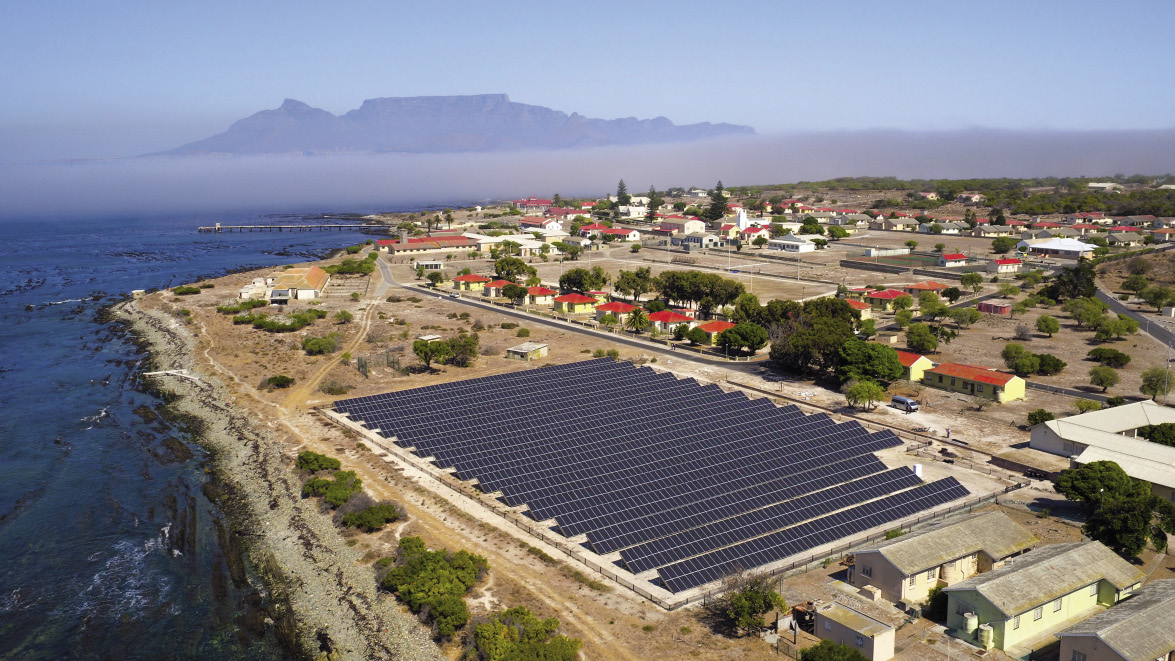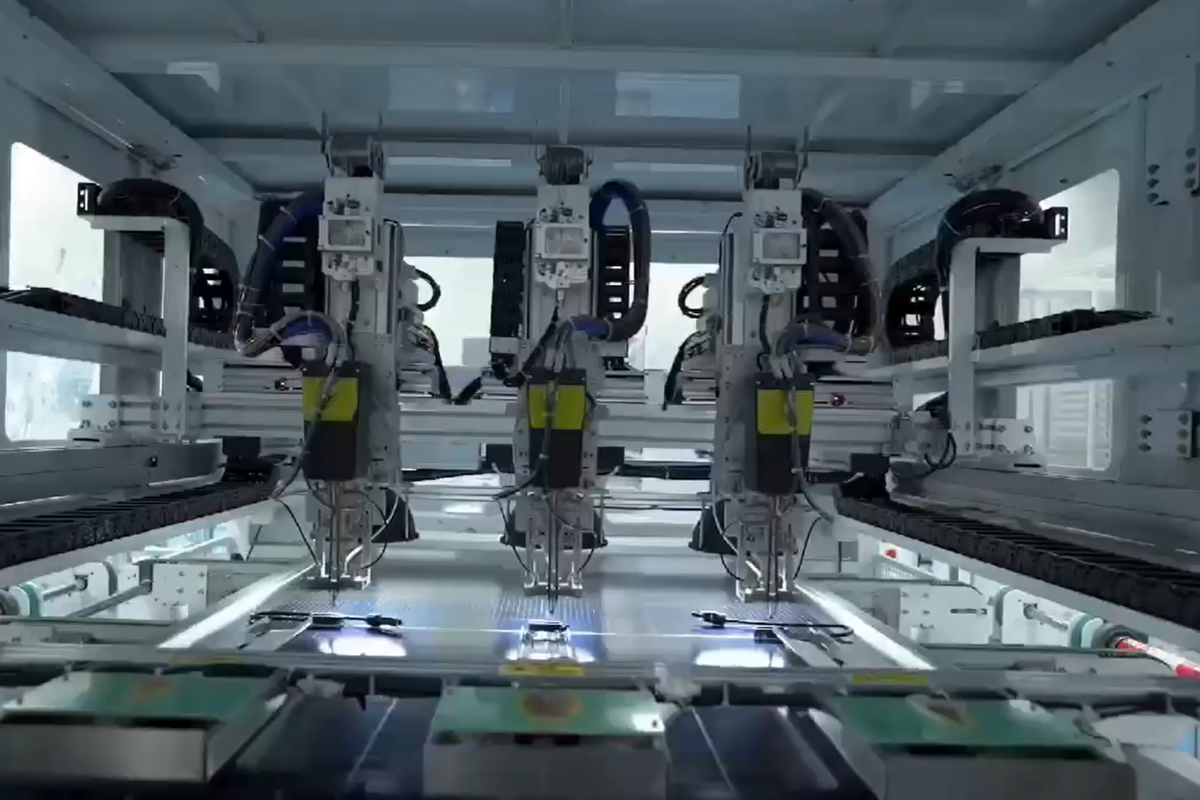From pv magazine, November 2019 issue
Control systems for microgrids are already performing a wide range of tasks in real-world projects. Among other things, control systems are designed to increase the share of renewable energy in the local electricity mix, reduce the operating costs of the power supply, and provide emergency backup power to maintain critical infrastructure in the event of disruptions to the public grid. Research groups are often involved in developing the new concepts of tomorrow’s energy supply and testing in real-world conditions. Among the projects presented here are autonomous, standalone power networks, as well as grid-parallel installations for municipalities, companies, energy suppliers, shopping centers and prisons.
Microgrid control systems
Electricity for day-trippers
For several centuries, South Africa’s Robben Island was a penal colony. Nelson Mandela spent 18 years of his 27-year imprisonment here. In the 1990s the prison was closed, and the island was converted into a national monument. In 1999, Robben Island was designated a World Heritage Site. The former prison is now a museum that is visited by around 2,000 tourists a day. Some 200 people also live on the island – mostly tour guides and museum employees. Previously, the island’s power was supplied exclusively by diesel generators. In 2017, ABB built a microgrid that supplies the island with solar power for at least nine months of the year and reduces the island’s CO2 emissions by 75%.
The microgrid consists of a photovoltaic system with a rated output of 667 kW, and a battery storage system with a capacity of 837 kWh. A remaining 500 kW, diesel-fired power plant ensures reliable supply even when the sky is cloudy and the batteries are drained. The complete system is monitored and controlled from Cape Town. As a result, it is no longer necessary to have a service team for the electricity grid permanently stationed on the island.
High voltage
Since 2017, the technology applications center of U.S. energy provider Ameren has had a largely self-sufficient power supply. The facility is connected to several residential units on the nearby campus of the University of Illinois by an intelligent microgrid. The peak load of all of the interconnected buildings is around 1 MW. What makes the project unique, according to its developer, S&C, is that it is one of the few microgrids in the world that has several control levels and is operated with mains voltages between 4 and 34.5 kilovolts.
The grid combines two 500 kW gas-fired generators, 125 kW of photovoltaics, 50 kW of wind power, and a 250 kW battery storage system, to produce a total output of approximately 1.4 MW. The area network is controlled by an IPERC GridMaster Microgrid Controller produced by S&C.
Ameren uses the microgrid to test the cost-effectiveness of various applications. Among them, in addition to the general increase in supply security for the easier integration of renewable energy sources, is the autonomous supply of individual grid areas. The latter could offer enormous benefits in the event of storm damage to overhead lines, for instance.
Blockchain village
The village of Wildpoldsried is one of the showcase projects for the German energy transition, and a popular destination for international academic and business delegations. Installed in the Bavarian community with some 2,600 inhabitants are PV systems with a generation capacity of around 5.3 MW, and solar-thermal systems covering a total area of roughly 2,300m². In addition, there are nine wind turbines with a total capacity close to 18 MW, various biogas and biomass power plants and two small hydroelectric plants. Over the course of the year, the municipality generates nearly seven times more renewable energy than it consumes. This is a major challenge for the local power grid. In the Iren2 research project, a consortium of four companies and two universities has tackled this challenge. One member of the consortium is Siemens, which has equipped the municipality with a microgrid control system. Normally, the microgrid is connected to the higher-level distribution grid. The control system then synchronizes frequency and voltage with the specifications of the public grid operator, balances generation and consumption as far as possible, and ensures efficient feed-in of excess energy. Through intelligent control of the various energy system components, which also include a 300 kW battery-storage unit, the necessary grid expansion in the community was reduced by approximately 40%. The microgrid can also be operated independently. This was demonstrated by the consortium in an experiment in August 2017, in which the researchers deliberately triggered a power failure in part of the low-voltage grid by decoupling that part of the network from the public grid. The Siemens microgrid controller was able to supply the subnetwork with power again shortly after the failure and operate it independently. After a few minutes without blackout or incident, the controller reconnected the grid section to the public distribution grid. This ensures that the power supply can also be secured in the event of prolonged malfunctions, such as storm damage or flooding.
In March 2018, researchers in Wildpoldsried initiated another project known as Pebbles. This project will test peer-to-peer energy trading based on blockchain technology. This allows neighbors to sell surplus energy, for example from PV systems, directly to other neighbors in the microgrid. The blockchain technology enables anonymous, forgery-proof transactions and is the basis for accurate billing of shared kilowatt-hours and their equivalent in euros. The aim of the project, which will run until 2021, is to develop a trading platform for local green power with a virtual power plant and its own electricity exchange.
Microgrids for crustaceans
A lobster-breeding operation in Western Australia was severely restricted by local energy supplier Horizon Power. At the Lobster Shack facility, the public grid was only able to provide a maximum of 140 kW of power. Additionally, an existing PV plant was not allowed to feed electricity into the public grid.
The planned expansion of the lobster farm could only be carried out with electricity generated onsite and a smart grid. The Australian company SwitchDin expanded the existing solar plant by 150 kW, installed an additional 160 kW diesel generator and added a 755 kWh battery-storage system. Several SwitchDin droplet controllers have since been used to monitor, control and manage data in the grid-parallel microgrid. Intelligent control algorithms ensure optimization of onsite consumption during normal operations and keep the power grid stable, even in the event of power failures in the higher-level distribution grid.
Green power
Lifou is an island of the French archipelago of New Caledonia in the Pacific Ocean east of Australia. The island has about 10,000 inhabitants and an average electricity consumption of 1.2 MW. Peak load is around 2.4 MW.
In September 2019, French company Engie EPS installed a storage system with a capacity of 4.6 MWh, equipped with Engie’s Prophet EMS microgrid control system. This connects the battery-storage system with various existing electricity generators. In addition to diesel generators, the network also includes several PV, wind, and bioenergy plants.
The newly installed offgrid network will now meet 80% of the island’s electricity demand with locally generated green power. Additional renewable energy generators will be added in the coming years so that the island has a year-round supply of clean energy.
Shopping in a microgrid
The grid-parallel microgrid in the Super U shopping mall in Mauritius combines a 1.2 MW PV system with a battery-storage unit and several diesel generators. The grid is contolled by the Universal Power Platform from German supplier Dhybrid. All of the locally generated PV is consumed directly on site. Excess solar is stored in special cooling tanks and, if required, used by chillers and a central air conditioning system. The backup diesel generators and the energy storage system ensure the autonomy of the shopping center, even under full load. Thanks to the intelligent control of the energy system, the shopping center saves nearly 500,000 litres of diesel annually, which corresponds to around 1,100 metric tons of CO2.
Hemmed in
Microgrid developer Encorp has installed an intelligent control system for the power grid of the Santa Rita prison in Dublin, California. Around 4,500 inmates are incarcerated at Santa Rita in an area of about 100 hectares. Since 2012, a combination of PV (1.2 MW), wind power (12 kW), diesel generators (2 MW), fuel cells (1 MW) and battery-storage systems (4 MWh) has been supplying the prison facility with sufficient energy even in the event of long power outages. In grid-parallel operation, energy management not only reduces the prison’s peak load by 15%, but also shrinks its annual operating costs by around $100,000.
Smart stadium
The Skagerak Arena is the football stadium of the Norwegian football club Odds BK. Since June 2019, ABB’s Ability e-mesh system has been optimizing the onsite consumption of an 800 kW PV system on the stadium roof with a 1,000 kWh storage system.
What is special here is that in addition to supplying the stadium directly with solar power, it also supplies 15 neighboring residential buildings. The local energy supplier Skagerak Energi is using the microgrid project to gather experience with energy management in a “prosumer system” for the smart grid of the future.
Drinking water
Since 2016, a microgrid with a control system from Ferntech has been supplying drinking water to a village of around 250 inhabitants in La Guajira, Colombia. The system uses 7.5 kW of photovoltaic power, a 350 W wind turbine, and an 11.2 kW lithium battery. This powers a seawater desalination plant based on reverse osmosis, including the necessary pump systems. It is mostly self-sufficient, but also has a connection to the public power. The system produces around 1,000 litres of drinking water. A remote monitoring system lets Ferntech monitor the energy systems and desalination plant from Cologne, Germany. The water quality is also monitored. If certain quality parameters reach a critical value, the system switches off automatically.
By Mirco Sieg, who advises on intelligent micro networks via his company, Micropowr. Contact him at ms@micropowr.net
This content is protected by copyright and may not be reused. If you want to cooperate with us and would like to reuse some of our content, please contact: editors@pv-magazine.com.








I wish those who are interested in human welfare through reducing environmental pollution, irrespective of the national barriers, should promote micro grids in a big way.